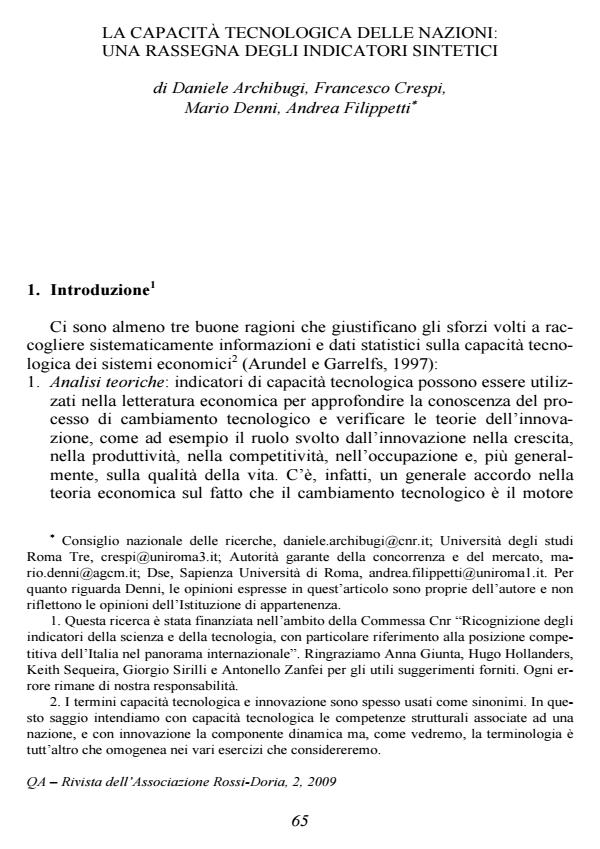La capacità tecnologica della nazioni: una rassegna degli indicatori sintetici
Journal title QA Rivista dell’Associazione Rossi-Doria
Author/s Daniele Archibugi, Francesco Crespi, Mario Denni, Andrea Filippetti
Publishing Year 2009 Issue 2009/2
Language Italian Pages 37 P. 65-101 File size 630 KB
DOI 10.3280/QU2009-002003
DOI is like a bar code for intellectual property: to have more infomation
click here
Below, you can see the article first page
If you want to buy this article in PDF format, you can do it, following the instructions to buy download credits

FrancoAngeli is member of Publishers International Linking Association, Inc (PILA), a not-for-profit association which run the CrossRef service enabling links to and from online scholarly content.
The Technological Capabilities of Nations: A Survey of Composite Indicators - Composite synthetic indicators of the technological capabilities of nations have been used ever more frequently over the last few years, creating a sort of Olympic Games medal table of the innovation race. Such measurement tools have been formulated at the macroeconomic level by the European Commission, specialised 98 United Nations Agencies, the World Bank, the World Economic Forum and individual scholars. All these indicators are based on a variety of statistical sources in order to capture the multidimensional nature of technological change. This article reviews these various exercises , in particular) casts light on the explicit and implicit assumptions on the nature of technological change; ii) discusses their pros and cons; iii) examines the soundness of the results achieved. Finally, the relevance of synthetic indicators of technological capabilities for policy makers, company strategies and economic studies is discussed.
EconLit Classification: O300, O570, C340
Keywords: Technological Capabilities, Composite Indicators, Innovation Measurement, Cross-Country Comparisons
Daniele Archibugi, Francesco Crespi, Mario Denni, Andrea Filippetti, La capacità tecnologica della nazioni: una rassegna degli indicatori sintetici in "QA Rivista dell’Associazione Rossi-Doria" 2/2009, pp 65-101, DOI: 10.3280/QU2009-002003